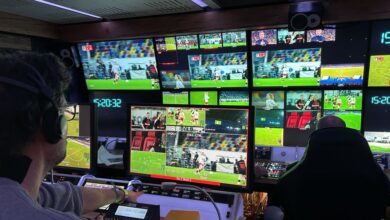Baltimore City Schools begins installing $5.4M AI-based weapon-detection system; some teachers, students wary – Baltimore Sun

The Baltimore City school system began rolling out a new artificial intelligence-based weapon-detection system at 28 schools this week.
Some Baltimore teachers and students, however, are wary of the technology’s effectiveness and its impact on students’ educational experiences. The system, manufactured by Evolv Technology, was sued by its shareholders and is the subject of two federal regulatory inquiries.
The system was piloted at six high schools before the board of school commissioners in February approved a four-year, $5.46 million contract without discussion. That month, the company publicly said the Securities and Exchange Commission launched a “non-public, fact finding inquiry.” In October, the Federal Trade Commission started looking into claims that Evolv uses deceptive marketing practices.
“Evolv stands behind its technology and is proud to partner with hundreds of security professionals to add a layer of advanced technology to their safety plan,” the company said in October and February responses to the SEC and FTC probes.
The company did not immediately respond to a request for comment Wednesday.
The system is advertised to be faster than a typical metal detector because its artificial intelligence software alerts only metal used in weapons, reducing the number of times students are flagged and searched. Students walk between two scanners, similar to the design of a normal metal detector, but don’t have to take off bags and backpacks unless they set off an alarm.
Students have to remove metal eyeglass cases, binders, laptops and umbrellas before they walk through the Evolv scanner to avoid a false alarm.
Ethan Eblaghie, a senior at Baltimore Polytechnic Institute and former student commissioner, said he worries that students could sneak knives in binders and other items that aren’t scanned. He said school staff seem generally supportive of the new system but that students have mixed opinions.
Currently, all high schools have metal detectors provided by Garrett Metal Detectors under an annual $200,000 contract. A student survey from the 2021-2022 school year found that only 56% of students felt safe in schools, according to board documents. Principals felt that more weapons detection systems were needed due to increased school incidents, the document continued.
About 70% of schools across the country use some type of security screening, said Odis Johnson Jr., an executive director of the Johns Hopkins Center for Safe and Healthy Schools who studies school surveillance technology.
But AI-based security screens promise far more than standard metal detectors, such as visual imaging and a complex notification process that can alert law enforcement, Johnson said. Evolv and other AI security technology can be oversensitive and lead to false alarms, he said, including from items shaped similarly to weapons, such as hairbrushes or eyeglass cases.
“I think they’ve overpromised,” Johnson said. “While AI and technologies are perhaps going to lead to some beneficial improvements, I think right now we’re at the beginning of AI [being used] as a resource in school safety and security, and these technologies need to be improved.”
After the six-month Evolv pilot, a survey of 600 students, staff and families indicated entry time into school buildings was faster after a two-week learning curve. About 91% of staff surveyed said they support the system and 77% believe it makes schools safer. About 72% of students said they preferred it over metal detectors, and 57% of students reported feeling safer.
Evolv advertises that its technology is used at more than 200 schools and universities, including those in Prince George’s County. The Capital One Arena in Washington, D.C., uses Evolv to scan large crowds “in a less invasive manner than traditional walk-through magnetometers,” according to arena officials.
But members of the Baltimore teachers union say the system is more invasive than metal detectors and creates an unwelcoming environment at school.
“How do you feel when you go through the TSA screening line? How do you literally feel in your body?” asked Cristina Duncan Evans, teacher chapter chair of the Baltimore Teachers Union. “I think that we have kind of normalized the process of invasive screenings. And it’s fair to bring up concerns that it’s not an appropriate interaction to have with students.”
Middle school buildings are often combined with elementary schools and don’t have metal detectors. Some stand-alone middle schools will have Evolv scanners. Middle schools sometimes have security screens, typically on a temporary basis after an incident happens at the school, Evans said.
City school teachers have repeatedly asked for affordable security measures like alarm systems and locks inside classroom doors, Evans said. “No one asked for an AI weapon detection system,” she said.
Johnson, in a research study published in the Journal of Criminal Justice, found Black students were four times more likely than not to be in schools that relied most heavily on AI surveillance systems.
“I’m not excited that another predominately African American system would be moving toward AI security surveillance, especially a system as untested as Evolv,” he said.



